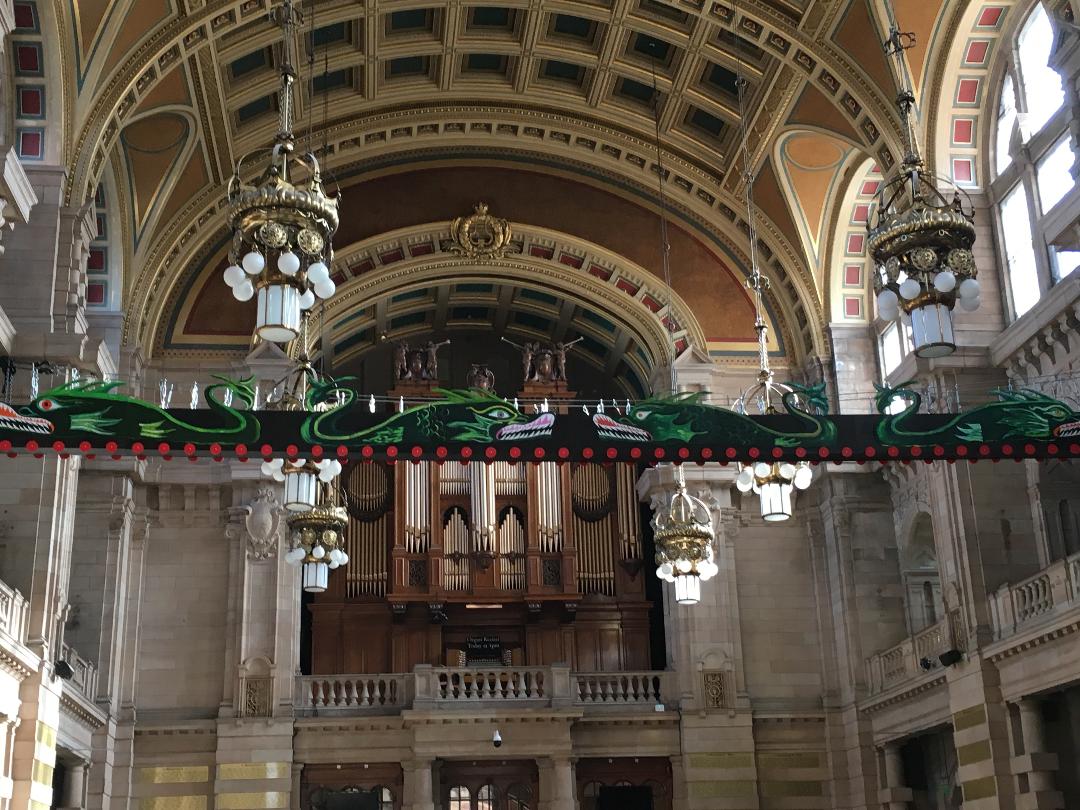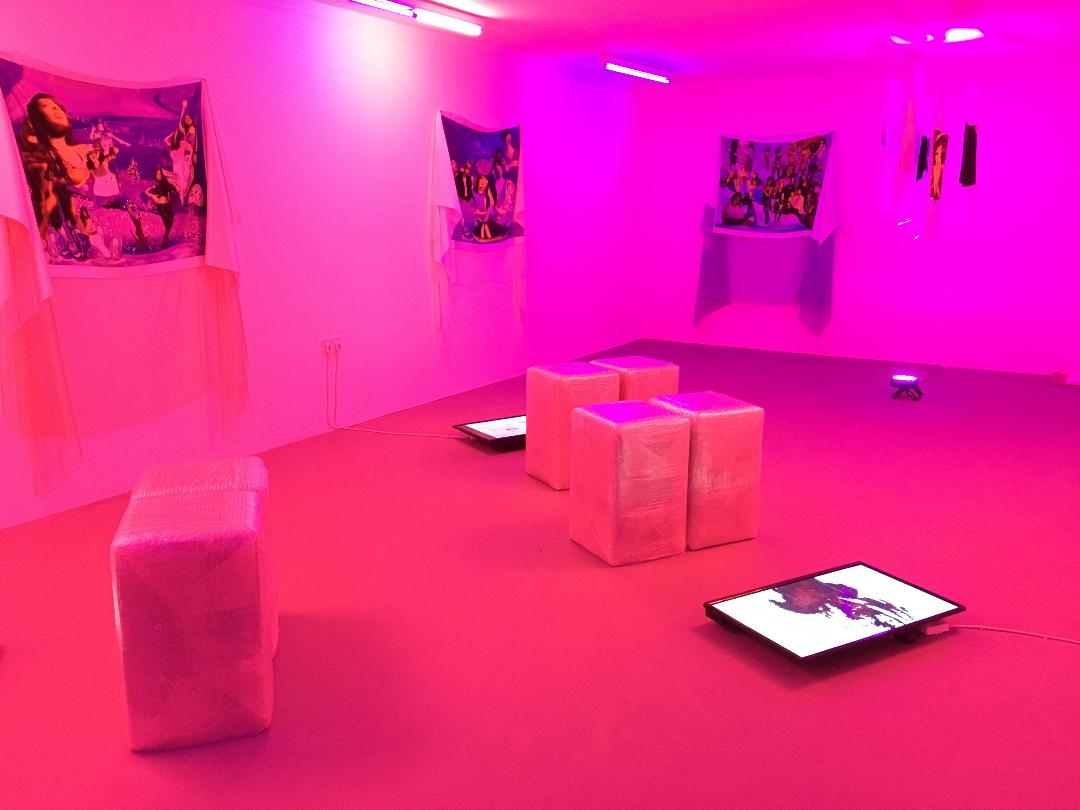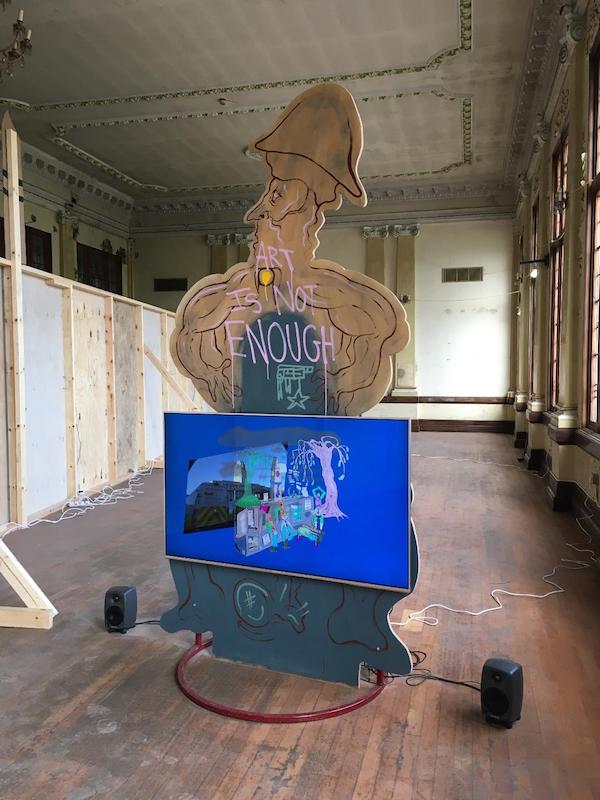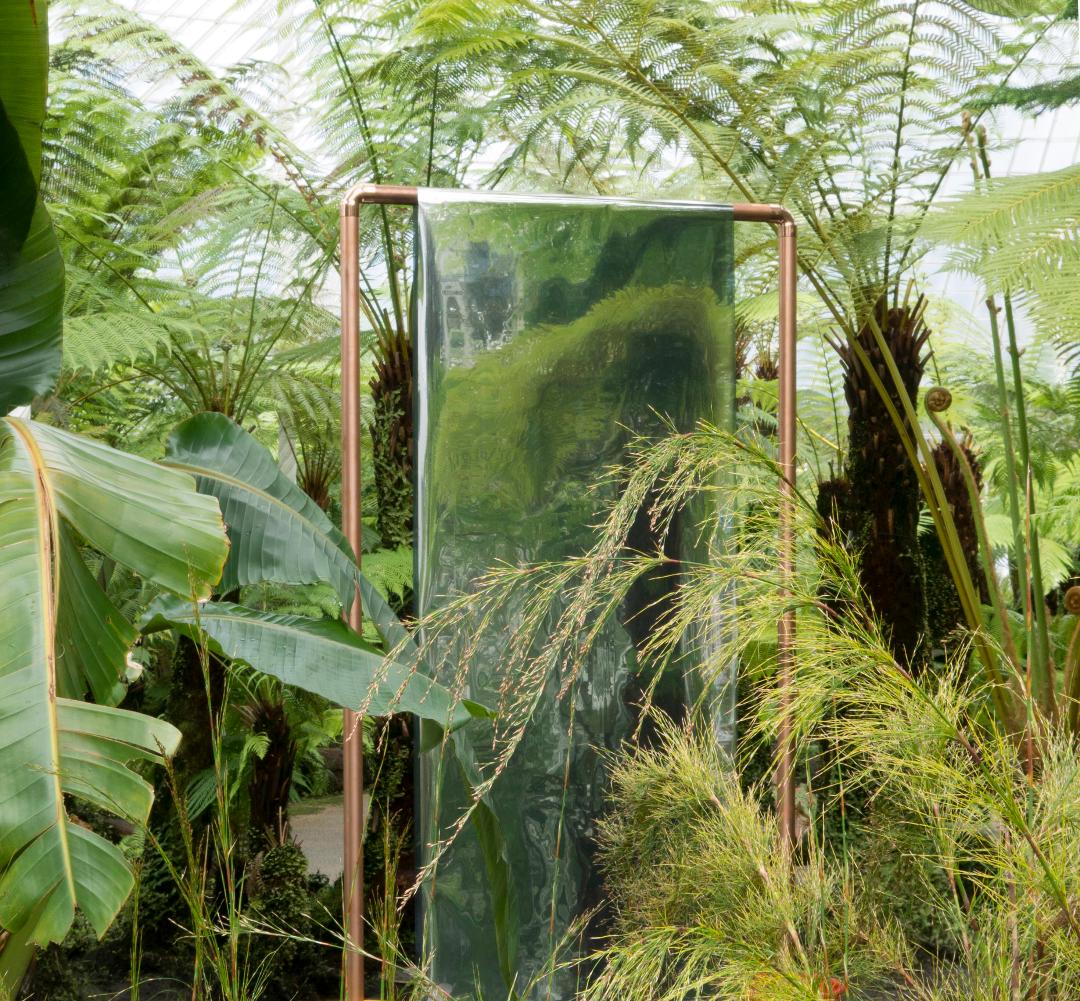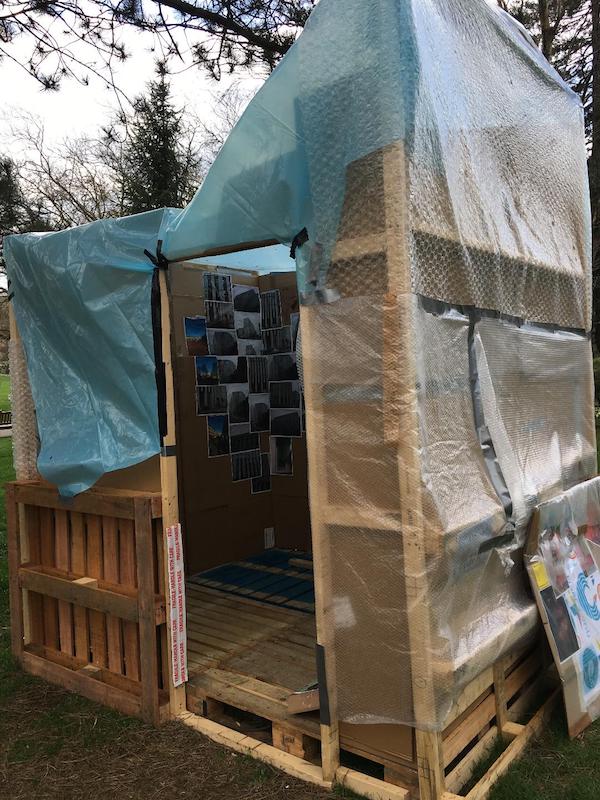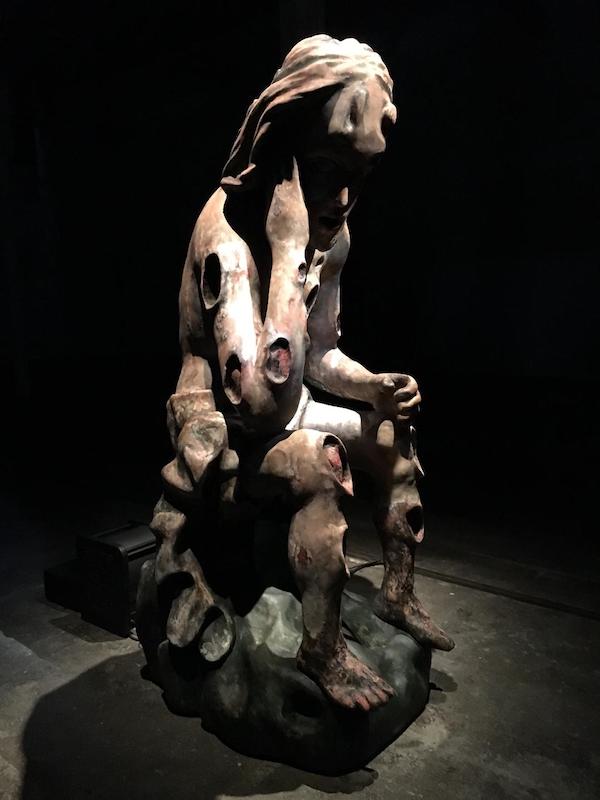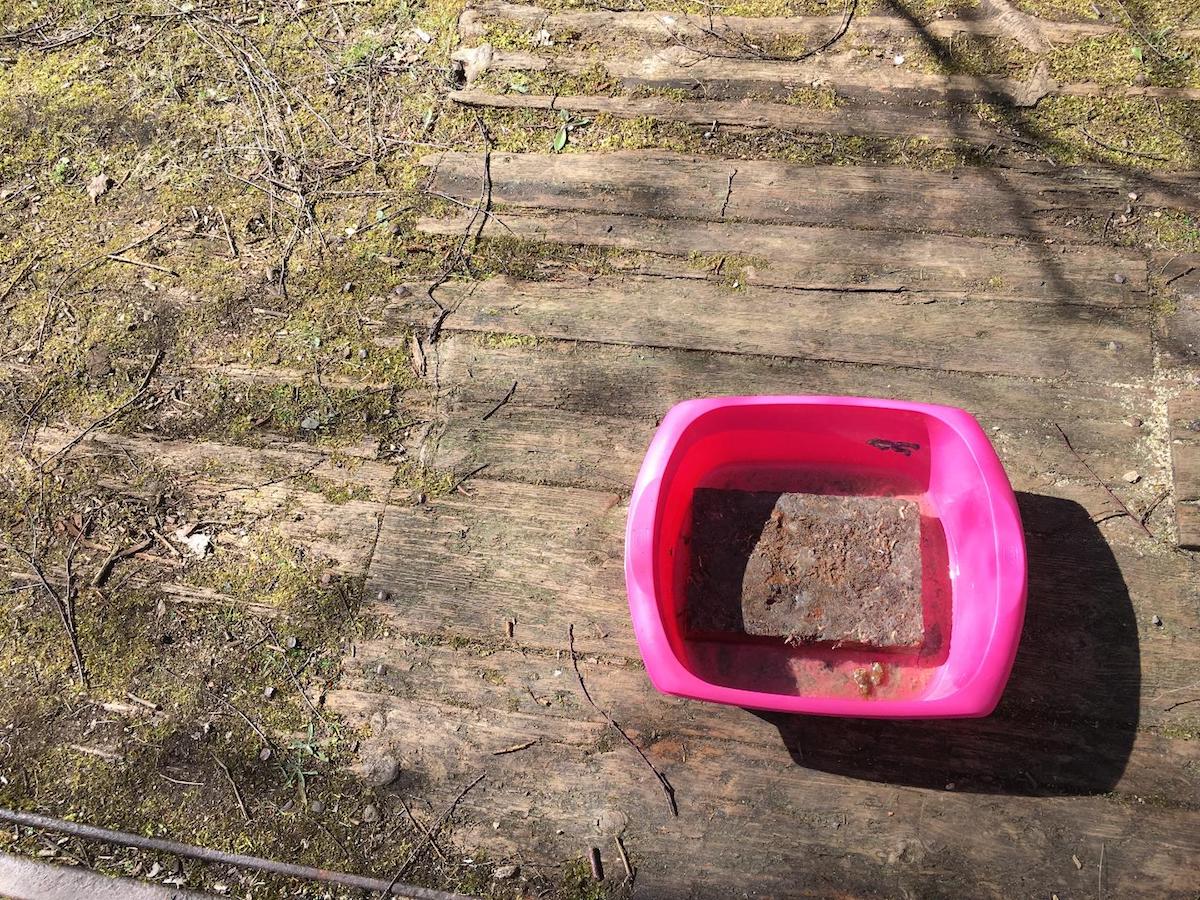Gianna Tasha Tomasso reports from this year’s Glasgow International, contrasting large-scale media friendly exhibitions with local temporary interventions as a way to locate the multiple economies upon which the biennial rests.
In light of the second fire at the Glasgow School of Art building, the writer and editors at CIRCA wish to extend our deep sadness for and with the arts community in Glasgow. While researching this article the sense of community and resilience in Glasgow by artists and art students was palpable and it is this resilience which we hope will help in the coming weeks.
“Glasgow is a magnificent city,” said McAlpin. “Why do we hardly ever notice that?”
“Because nobody imagines living here…”[1]
Glasgow International joined the global biennial circuit in 2005. With the initial programme consisting of 150 artists and contributors, it has evolved into a sprawling monumental feast of visual art. Now showcasing the works of 268 artists across 78 venues throughout the city, newly appointed director Richard Parry cited the further 80 peripheral exhibitions as having resonance with the key ideas in his core exhibition programme and acting as ‘nodes’ for a wider thematic. Titled Cellular World: Cyborg-Human-Avatar-Horror the nine main exhibitions took a timely look at the changing role technology has in our everyday lives. The production of digital ‘selves’ as avatars and the larger existential questions the digital acceleration has posed to us as a species, seemingly teetering between utopia and dystopia. The theme allowed for some ambitious large-scale tech heavy art works programmed alongside localised lo-tech temporary interruptions in public spaces.
Unevenly spread across the city, festival venues included housing estates, derelict post-industrial spaces, the botanic gardens and an empty swimming pool to name but a few. Former curator at Grundy Art School in Blackpool, Parry’s futuristic theme had the right amount of indeterminacy to allow for expansive para-curatorial events, happenings and performances. Many of the peripheral offerings were concerned with themes of intersectionality. However, some works pointed to local concerns within art and its many economies and contrasted with the more populist inclusion of past Turner prize winners showing in the bienniale such as the highly anticipated work Nobodaddy by Mark Leckey.
2016 Turner prize winner Lubiana Himid’s colourful dragon-like carriage straddled the grand Kelvingrove Museum atrium. The specially commissioned work, titled Breaking in, Breaking out, Breaking up, Breaking down, while appearing to defy gravity, sat all too comfortably in the architectural vastness of the museum main hall and got lost into it. With the intention of the work cited as the probing of “overlooked histories within art and culture” it resembled a carnivalesque leftover, just another artifact in a place of artifacts. Perhaps her early career theatre set design training all too evident in this work, it was hard to see exactly whom the piece was intended to speak to or for.
Directly across from Kelivingrove Museum the semi derelict Kelvin Hall housed one of the most convincing works within the directorial programme: multimedia artist E. Jane’s installation Lavendra offered an immersive pink, purple and blue neon space. Flat-screen TVs were laid on the floor on high volume, playing fan style YouTube videos of 1990 R and B singers, with images of the artist moving on collaged domestic spaces. The silkscreen textile hangings on the walls and bubble wrapped plinths gave a slick futuristic feel. E. Jane’s work is complex; their multiple personas offer an expanded practice, from installation to music production, fashion lines and performance collaborations, with concurrent themes of Afro-futurism and black pop culture. Lavendra felt like stepping into a technologically phenomenological future pop culture TV show, a Netflix style binge within a dystopia/utopia of sound and colour. Lavendra transformed the gallery into a precarious cyberspace ready to crash with sensory overload.
Colonising the main foyer and grand dance hall, Birmingham born Hardeep Pandhal’s work Self- Loathing Flashmob was another highlight. His acerbic cartoon aesthetic sat in direct contradiction to the crumbling grandeur in which it was housed, a perfectly confounding partnership that may have eluded some of the works in the more traditional GOMA or CCA venues. Pandhall graduated from Glasgow School of Art MFA programme in 2013 and has garnered much critical acclaim and accolade within art circles. A Self-Loathing Flashmob presented numerous large-scale schizoid cartoon cut-out sculptures, accompanied by a wall of monitors playing film documentary footage taken during student fees protests in 2010. The installation of the TVs played on a backdrop of a painted partition wall with bloodstained bullet holes and palm trees. Multiple videos played on a loop with the audio bleeding into his mesmerizing animation, resonating the concerns of the students on film. The disturbing cut-out character sculptures, defaced with Pandhal’s trademark graffiti-like text, resulted in a sociopathic confrontation between a crazy cartoon community and serious institutional critique. His highly polished animation content leant more towards the psychopathic with an audio accompaniment of Giorgio Moroder’s unmistakable title track from the film Scarface. Without doubt Hardeep Pandhal is deserving of his recent accolades. While usually skeptical of proclamations in art circles of ‘the next big thing’, Pandhal clearly has a grasp on the dissonance within our current epoch, and his work provokes an uncomfortable recognition of the insanity of it all.
A short walk from the Kelvin Hall and into Glasgow’s west end, Kari Stewart’s programmed group show Glasshouse presented a combined effort of eight artists, with work placed in varying locations throughout the botanic gardens. Described in the publicity literature as a “heterotopic space containing its own oppositions; interior and exterior, nature and culture, global and local”, the show had a real ‘recent graduate’ feel, a freshness and un-self-consciousness that worked perfectly with the strange otherworldly botanics. Plant Stand, a sculptural work by emerging artist Levi Hanes, was perhaps the strongest work in this group show. Made from copper piping and metallic material, Plant Stand resembled a postindustrial waterfall stuck in time on an alien landscape. Placed amongst the fern-like plants inside one of the magnificent glasshouses in the gardens, this sculpture should be in permanent situ, left to consider itself amongst the unnatural natural, only to be eventually overtaken by the strange and wonderful species with which it cohabits and reflects.
Glasgow School of Art graduate Dan Monk’s makeshift pallet structure was reminiscent of a mini Thomas Hirschorn construction. Situated in the grass area of the botanic gardens, open to the elements with only plywood, plastic sheeting and bubble wrap by way of protection. Low-quality printouts of clinical looking apartments seemed hastily collated inside the structure, with one image of anti-bird spikes on a tree, the work seemed to point a finger at the affluent area in which it was situated. The structure felt unsafe underfoot, perhaps an analogy to the precarious housing situation in ‘destination’ cities worldwide due to Airbnb and rising rents.
Moving across the city to Glasgow’s Tramway gallery, Mark Leckey’s solo show Nobodaddy was perhaps the most highly anticipated offering within the 2018 programme. Located in the darkened expansive space of the main gallery, a larger than life sculpture of a porous biblical Job sat directly opposite a floor to ceiling CGI video projection of a journey through intestines. Positioned like Rodin’s The Thinker, the foam, steel, wood and jesomite sculpture was illuminated at varying points in tandem with a domineering Manchester accent monologue. The figure dominated the huge space. The accompanying literature spoke of a body expanded and infiltrated by technology. Leckey converted his oversized sculpture into a 7.1 surround sound audio system. However, the lighting gave the impression that someone in the gallery was flicking a switch on and off to coincide with the droning voice. Spectacular? Yes. However, the sculpture of Job seemed clunky, relying mostly on the lighting and sound effects to have any kind of resonance. It felt sad, dependent on the technology presented with it, but then is that not the age we are in? Our dependence on the very thing that will bring us beyond human?
Some respite from the technological was found in the Tramways’ multi purpose outdoor space, The Hidden Gardens. A small group exhibition by local artists, titled Bone Meal, once again brought the tone back to the very contemporary. A resonating outdoor sound piece of intermittent music from high clarity speakers placed between trees by Aideen Doran; and multiple plastic washing-up basins placed on the ground with varying natural materials inside, left open to the elements by artist Jennifer Bailey. One of these basins had attracted a little girl who was happily playing with the contents, oblivious as to its fine art status. The works had a spontaneity and honesty of intent that operates on a different economy. In direct contrast to Leckey’s work, this lo-tech but highly effective work spoke vividly of our futures and of the natural and unnatural. Bailey’s work seemed a more apt categorisation of contemporary practice, and its seeming insignificance alongside such spectacles spoke all the more in its own space for its simplicity.
Conjuring up some sort of coherent overview on such a vast visual art event as GI18, without being lured and dazzled by the ‘winners’, meant much time was spent looking for works that resonated with the local. Being aware of the recent funding decisions by Creative Scotland, which have resulted in a 100% slash to Glasgow’s world famous artist-led gallery space Transmission funding, with the board stating that the cuts were “discriminatory, conscious or otherwise, and indicative of a wider but pressing issue of institutional bias”, some sense of reflexivity and an understanding of the multiple economies and critical dialogue operating within the city’s art scene seemed apt.
MAP, a non-profit organisation based in Glasgow’s Centre for Contemporary Art, are dedicated to the discussion and support of artist-led publishing and production, publishing artists’ writing, critical essays and interviews, and “curating an expanded site for re-examining and developing practices of active looking, reading, writing and distribution”.[2] With similar histories to CIRCA, moving from print to digital publishing in 2011/12, MAP presented a curated project within Glasgow International. The 2018 offering, titled Who we are about to, was curated by Dr Deborah Jackson and comprised of a shop and showroom presented by collective Peel eezy and film screenings of work by artists Lucy Beech and Emma Finn. Taking its title from the 1976 feminist science fiction novel by Joanna Russ, in which a female stranded on a distant planet resists all attempts by her peers to repopulate, and rejects forced pregnancy in the face of dangerous unknowns, opting instead for death. The project’s theme takes on board Jackson’s key interests in intersectionality and futurity. The entire scope of the project allowed for multiple subjectivities presented to be mined by the viewer, from the book to the accompanying curatorial essays. Jackson stated in her introductory article that “Who we are about to explores the ways in which art can provide a productive, critical space where future visions can be rehearsed and offer different perspectives, ways of seeing and understanding, by revealing our present states of being and sharing alternatives for our futures.” While these are lofty claims, the integrity of the work of Peel eezy shone a light on how local artists taking part in the art economy in Glasgow assert themselves.
Calling themselves a pseudo-faux art institution and creative brand, the collaborative practice of Glasgow based artists Gemma Crook and Mina Heydari-Waite presented a corporate brand of future imaginary art institutions. Consisting of a collection of installations, art objects, performances, workshops, videos and printed matter, Peel eezy had slick corporate style branding and a pop-up shop with a ‘capsule’ collection of art objects priced to the formula: material costs + labour priced at living wage divided by edition number = price. Situated in the 1960s Savoy Shopping Centre, the concept and aesthetic of their work dealt with artistic labour and the re-imagining of futures from the perspective of the artist as maker who also must operate within systems of economy. This work was among many in the festival that took a closer look at the multiple economies upon which art operates.
Again and again these ‘local’ interventions were in contrast with some of the more notorious artists showing work. The opulence of Duggie Fields’ historical installation in the Modern Institute felt like a garish bad trip, the re-creation of his Earls Court London apartment, with a plethora of his own brightly coloured works adorning the walls spoke of indulgence and opportunism.
Having covered but a tiny drop in the Clyde, Glasgow International’s extensive programme allows the committed viewer to unravel Glasgow in its entire industrial gritty splendour. The visual art biennial is an opportunity for first-time visitors to the city to build a familiarity that no other type of guided tour could offer. For those most familiar, it offers a unique way of re-viewing the city. Perhaps it could be argued that most biennials around the world do this but none in such proximity to Ireland. With Glasgow having a smaller population than Dublin, yet with 30% of Turner prize nominees in the past decade coming through its School of Art, it might be pertinent for us to consider the art biennial in Glasgow in relation to our own offerings of Tulca and Eva, both in scale and opportunity for our home-grown artists and graduates. Or perhaps we might consider how Dublin positions itself as a cultured city when there currently seems so little in the way of artist-led spaces, or a cohesive scene within any economy from which to build something as large and luring as an International biennial. With cheap, easy transport links and an art appetite that seems insatiable, the 2020 festival is firmly in the diary. Glasgow is a magnificent city, and after spending time seeking out the local visual art economies and inhabitants, I could quite easily imagine living ‘here’.
